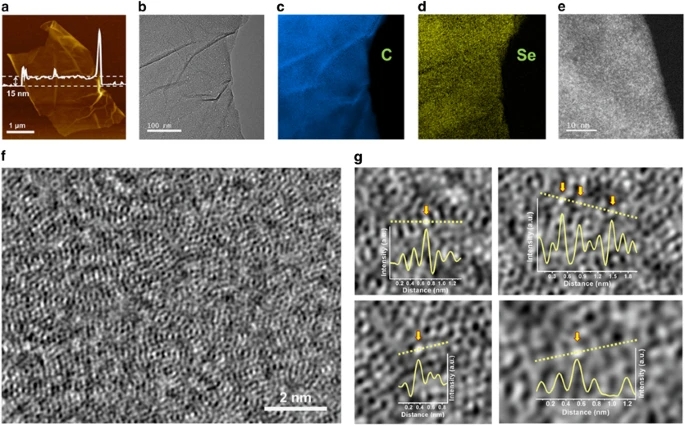
The use of reduced graphene oxide (rGO) suffers from irreparable damage because of topological defects and residual heteroatoms, which degrade the inherent properties of graphene. To restore its electrical transport properties, charge-transfer chemical doping with d-electron-rich heteroatoms has been proposed. Herein, we report the effects of atomic-level selenium doping in rGO. Using first-principles calculations, we found that selenium atoms could be selectively bonded in particular locations, such as the pseudo-edge sites of hole-cluster defects in the basal plane and edge defect sites of graphene; however, we found that the intrinsic topological defects of the basal plane were unfavorable for bonding. Numerous selenium atoms were introduced on the fully amorphorized rGO surface, inducing a dramatic change of its electrical transport properties by electron doping. The large metallic regions formed by the selenium atoms on rGOs led to the enhancement of electrical conductivity by 210 S cm–1 at 300 K. Moreover, the temperature-dependent conductivities (σ)/σ20K of selenium-doped rGOs (Se-rGOs) were almost constant in the temperature range of 20–300 K, indicating that the carrier mobility of Se-rGOs becomes temperature-independent after selenium doping, similar to that of pure graphene.
